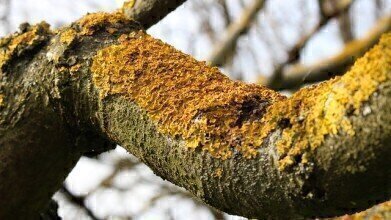LC-MS
Hallucinogenic Lichen — Chromatography Investigates
Nov 02 2016
A species of lichen found in the Ecuadorian Amazon region is thought to contain psilocybin — one of the first species outside of ‘magic mushrooms’ to contain psilocybin. Lichens are a species that are interesting to biologists because they are a composite organism. The lichen — Dictyonema huaorani — is a new species to ethnobotanists but has a history with curse creating shamans.
Lichen — just the two of us
A lichen is basically two organisms functioning together as one — a fungus in a symbiotic relationship with algae. Fungus are not capable of photosynthesis as they don’t have any green chlorophyll — so they cannot use the sun’s energy to make their own food. They absorb food from their surroundings, using organic sources to get their food. On the other hand, algae use photosynthesis to make food.
Lichens are a combination of the two — working together in a relationship beneficial to both parties. The fungus controls the relationship; it creates the network that protects the algae and provides it with moisture and security. In return, the algae provide the fungus with a constant source of food. Together, the relationship allows the algae and fungi to survive in environments that would be inhospitable to them on their own — deserts, very cold environments and exposed environments.
Psychedelic lichen
The new lichen was discovered by ethnobotanists Jim Yost and Wade Davis in 1981 — when they were working in the rainforests of Ecuador. A local tribe — the Huaorani people — told them about the lichen that shaman used in their rituals. The tribe had not used the substance for four generations — 80 years — but it was still known about. The tribe was only small and isolated from other tribes in the dense rainforests.
Among some tribes, hallucinogens are used as part of social event, they help to make a journey into your subconscious —perhaps the reason we use magi mushrooms to have outer body experiences or experience other worlds. But for the Huaorani, hallucinogens are an intoxicant only to be used by the shaman to project a curse onto another tribe.
Out-of-body with chromatography
Yost and Davis searched for the rare lichen and miraculously they found it — becoming the first Westerners to see it. They harvested some of the lichen — preserving it for future analysis. In 2014, it was finally analysed by researchers from Harvard University.
They used liquid chromatography linked with mass spectrometry to analyse the lichen and find what chemicals could make the shaman go on a psychedelic journey. Developments in LC-MS are discussed in the article, Capillary Flow LC-MS Unites Sensitivity and Throughput.
LC-MS revealed that psilocybin, tryptamine and several other compounds having hallucinogenic properties were in the lichen — making this lichen a unique specimen. Unfortunately, the small sample quantity and the lack of pure reference compounds means that the team cannot definitively state that the lichen is magic. With some psychedelic substances showing potential health benefits — one day we could be joining the shaman on a psychedelic lichen trip.
Digital Edition
Chromatography Today - Buyers' Guide 2022
October 2023
In This Edition Modern & Practical Applications - Accelerating ADC Development with Mass Spectrometry - Implementing High-Resolution Ion Mobility into Peptide Mapping Workflows Chromatogr...
View all digital editions
Events
Apr 23 2024 Kintex, South Korea
Apr 23 2024 Seoul, South Korea
Apr 28 2024 Montreal, Quebec, Canada
May 05 2024 Seville, Spain
May 15 2024 Birmingham, UK














